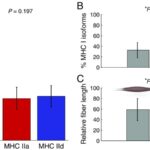Course Rating and Slope are crucial factors in determining golf course difficulty and calculating handicaps. While many golfers recognize these terms, understanding their meaning and application can be confusing. This article will delve into Course Rating and Slope, explaining how they work together to provide a comprehensive measure of a course’s challenge.
Decoding Course Rating: A Scratch Golfer’s Perspective
Course Rating represents the expected score a scratch golfer (a player with a 0 handicap) would achieve on a particular course. It reflects the playing difficulty for highly skilled golfers. For instance, a course with a par of 72 might have a Course Rating of 71.4, indicating that a scratch golfer is expected to score slightly under par. A higher Course Rating signifies a more challenging course for skilled players. Importantly, each set of tees (e.g., blue, white, red) receives its own Course Rating to reflect varying difficulty levels. A course might have a 72.8 rating from the blue tees and a 71.0 rating from the white tees, indicating the blue tees present a tougher challenge.
Why Two Measurements? Introducing Course Slope
While Course Rating provides a baseline difficulty assessment, it doesn’t fully capture the challenges faced by less skilled golfers. Recognizing this, the USGA introduced Course Slope in the late 1980s. Course Slope measures how the difficulty of a course changes for a bogey golfer (a player who typically scores 18 over par). This number ranges from 55 to 155, with 113 representing the average difficulty. Higher Slope ratings indicate a more significant difference in difficulty between a scratch golfer and a bogey golfer. Like Course Rating, each set of tees has its own Slope rating. For example, blue tees might have a Slope of 123, white tees a Slope of 119, and red tees a Slope of 114.
Comparing Courses with Course Rating and Slope
Two courses can share the same Course Rating but have drastically different Slope ratings. Consider two courses, both with a Course Rating of 72. One has a Slope of 113, while the other has a Slope of 135. The first course, with the lower Slope, likely presents a more manageable challenge for bogey golfers, possibly due to shorter distances, wider fairways, or fewer hazards. A bogey golfer would likely score around 90 on this course.
The second course, with the higher Slope of 135, presents a significantly tougher test for bogey golfers, potentially because of increased length, narrower fairways, or numerous hazards. While a scratch golfer might still shoot around par (72), a bogey golfer would likely score well above 90. Factors like course length and hazard frequency disproportionately affect bogey golfers, contributing to a higher Slope rating.
Longer courses often require bogey golfers to use long irons or woods into greens, increasing the likelihood of missed greens and higher scores. Narrower fairways and abundant hazards like bunkers, water features, and out-of-bounds areas similarly penalize less accurate shots, leading to higher scores for bogey golfers.
Utilizing Course Rating and Slope for Handicap Calculation
Both Course Rating and Slope are essential for calculating handicaps, ensuring fair comparisons of golfing abilities across different courses. These metrics allow for standardized scoring adjustments based on the difficulty of the course played.
By understanding Course Rating and Slope, golfers can better assess the difficulty of a course and make informed decisions about tee selection. These two numbers provide a more nuanced understanding of course difficulty than par alone, allowing for a more accurate evaluation of a player’s performance relative to the course and other golfers.
